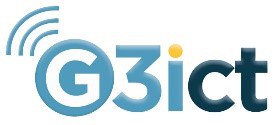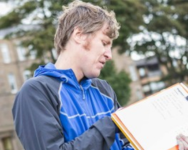Improving Data & Public Policy: A vision for understanding, anticipating, and responding to the rate of disabilities acquired through disasters
Posted on October 06, 2022

Senior Fellow, G3ict
G3ict’s Global Policy Center is exploring a new global effort on the use of data and technology to anticipate and respond to disabilities acquired through man-made and natural disasters. This series of blog posts provides context for the scale of this problem and outlines a possible four-part response, including community building, applied research, data science, and stakeholder support.
The final post of this series on acquired disabilities and disasters offers a vision for the future. In our previous posts, we framed the complexity of this issue and explained the compounding economic and societal costs of inaction. Here, we discuss a data science and technology approach that can enable governments, NGOs, and multilateral organizations to understand, anticipate, and respond to the rate of disabilities acquired through man-made and natural disasters.
G3ict envisions an approach with three complementary strategies. Together, these strategies could produce a data science application that can predict, at a global level, the likelihood, scale, and impact of disabilities acquired through disasters.
We offer this vision for the future as a starting point for exploration with partners and experts. This global humanitarian issue can only be addressed through ongoing collaboration and a commitment to improving existing technology resources, public policies and programs, and disaster relief efforts.
Proposed Strategy 1: Use big data analytics to create a new focus on acquired disabilities.
We are not yet using existing data effectively. There are numerous databases and predictive models on man-made and natural disasters. Typically, these resources are siloed and designed for unique user groups, such as climate scientists or the insurance industry. But that does not have to be the case. These resources can be combined through big data analytics techniques to shed new light on the correlation between disasters and acquired disabilities. From there, machine learning can be used to create predictions on the likelihood, scale, and impact of future events.
Examples of existing datasets for man-made disasters include The Armed Conflict Location & Event Data Project, the Early Warning Project, and the Our World in Data reports.
There are also mapping interfaces by the Internal Displacement Monitoring Centre, the United Nations International Organization for Migration, and the United Nations High Commissioner for Refugees.
Example resources on natural disasters and climate change include the International Disasters Database, the Germanwatch Global Climate Risk Index, the U.S. Federal Emergency Management Agency’s National Risk Index for Natural Hazards, and the National Oceanic and Atmospheric Administration’s Disaster and Risk Mapping interface.
A collaboration of global experts could identify the most relevant data sets and combine them to generate new insights. This work could include the identification of a list of indicators that correlate with the risk of acquired disabilities. These indicators may include the types of hazards, historical recurrences, past data on casualties and disabilities sustained, economic conditions within the country, the state of infrastructure, population demographics, political stability, and state human rights record, among others.
Assessing the potential risk of acquired disabilities due to disasters within a country, and how each indicator relates to predicted outcomes, could inform practical decisions for stakeholders based on a more complete understanding of the growth and diversity of the community. Examples could include better public policy to address the downstream effects of acquired disability (e.g., accurate budgeting for social services, widening gaps in educational attainment, workforce participation, poverty levels, etc.), allocation of public funds to mitigate risks factors (e.g., infrastructure projects to strengthen structures, bridges, water systems, etc.), NGO program development, and directed investments from multilateral organizations.
Proposed Strategy 2: Overlay crisis mapping and crowdsourced data to collect insights on acquired disabilities.
Crisis mapping is the real time gathering, visualizing, and analysis of data during disasters. Examples of crisis mapping data sources include Ushahidi, OpenStreetMap, Sahana, Facebook’s Disaster Maps, and Google’s PersonFinder API. These aggregation tools rely on a constant stream of data from the public and crisis responders. The real-time collection of data contributes to situational awareness and informs the deployment of resources. The most common inputs include social networking sites, participatory maps, and satellite imagery.
Crowdsourced data is critical to understanding the risks and realities of disabilities acquired through disasters. This information contributes to quicker and more effective responses during the acute phases of disasters. It also enables greater visibility of the human impact in the wake of disasters, such as the health status of people as they are displaced internally or across the world.
Work with experts in this emerging field could create methods that capture real-time data on disabilities acquired through disasters from affected people, NGOs, first responders, and city governments, among other groups. This data could be overlayed on the prediction model to continuously improve outputs to inform the development of public policies and programs, and guide the response of global aid organizations.
Proposed Strategy 3: Enhance global census tools to validate and correct assumptions about disabilities acquired through disasters.
The third component of a possible approach focuses on long-term improvements to census collection methods. The World Bank and Microsoft recently announced the development of a global disability data hub. The data hub will provide greater awareness of the growing scale and diversity of the disability community, with the goal of addressing longstanding economic and social inequities. The baseline census methodology for the data hub is the global standard created by the Washington Group on Disability Statistics.
The disability data hub could be an essential input for a prediction model. The benefits of the hub, and its use for forecasting the impact of future disasters, could be further enhanced by introducing questions about the origination of disability impacts. For example, a person responding to a census survey may be willing to disclose that they acquired their disability within the past five years due to a massive flood, a hurricane, or because they were a bystander to armed conflict.
Today, census methods worldwide do not ask questions about events that may have contributed to the onset of a persons’ disability. While inferences can be made about the natural intersection of aging and prevalence of disability, we lack a consistent, ongoing method to confirm how many people acquired disabilities due to man-made and natural disasters.
Collecting census data on the origination of disability impacts could validate or correct the assumptions made through a prediction model and calibrate how the steady in-flow of crowdsourced data could be used to inform real-time responses. Enhanced census methods could create important mile markers to gauge long-term trends in the economic and social impacts of disasters across the world. This could drive improvements in public policy and programs and contribute to more effective disaster risk reduction strategies to lessen the scale of causalities and acquired disabilities worldwide.
In conclusion, G3ict believes there is an urgent need and compelling opportunity to apply data science and technology toward the goal of understanding, anticipating, and responding to the rate of disabilities acquired through disasters. Our research suggests that the combination of the above strategies could result in a powerful and necessary new resource. The outputs of this approach could include global trend analysis, individual country profiles, risk indices, and model policy frameworks. Overall, we believe this work would complement the important progress that has been made on inclusive disaster risk reduction globally, while increasing attention on the overlooked humanitarian issue of acquired disability.
Our three-part blog series on acquired disabilities and man-made and natural disasters is just a starting point. G3ict has begun convening stakeholder forums to explore this issue in depth. Together with partners, we will identify practical actions to move beyond a concept and planning stage. There is a clear need to implement long-term solutions given the size and diversity of the disability community continues to expand as the frequency and impacts of disasters increase worldwide. G3ict welcomes engagement with all interested parties. Please contact Shane Kanady at [email protected] to join our community.





























